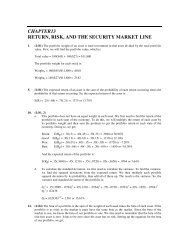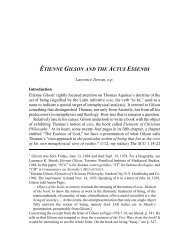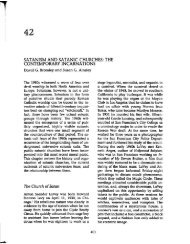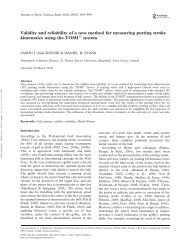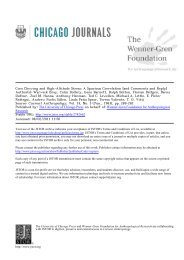Breaking the silence: helping men with erectile dysfunction
Breaking the silence: helping men with erectile dysfunction
Breaking the silence: helping men with erectile dysfunction
Create successful ePaper yourself
Turn your PDF publications into a flip-book with our unique Google optimized e-Paper software.
CARE OFTHE OLDER PERSON<br />
(Engender Health, 2003), and <strong>the</strong> stigma associated <strong>with</strong><br />
<strong>erectile</strong> <strong>dysfunction</strong> can cause <strong>the</strong> man to <strong>with</strong>draw from<br />
intimacy. In some cases all forms of physical contact can<br />
become non-existent, resulting in emotional distress, causing<br />
stress and adding to <strong>the</strong> psychogenic component associated<br />
<strong>with</strong> <strong>erectile</strong> <strong>dysfunction</strong>. Treat<strong>men</strong>t has <strong>the</strong> potential<br />
to resolve depression and improve <strong>the</strong> man's self esteem and<br />
overall quality of life and sense of weDbeing (Carson and<br />
McMahon, 2008).<br />
Currently, practitioners working in <strong>the</strong> primary care<br />
setting imple<strong>men</strong>t <strong>the</strong> guidance issued by <strong>the</strong> Depart<strong>men</strong>t<br />
of Health (DH), in a number of Health Service Circulars<br />
(DH, 1999a; 1999b; 1999c), to determine <strong>the</strong> manage<strong>men</strong>t<br />
and treat<strong>men</strong>t of <strong>men</strong> <strong>with</strong> <strong>erectile</strong> dysfiinction.The circulars<br />
provide <strong>the</strong> community nurse <strong>with</strong> guidance on good<br />
practice for those <strong>men</strong> who qualify for treat<strong>men</strong>t <strong>with</strong>in<br />
<strong>the</strong> NHS. Fur<strong>the</strong>r guidelines have heen produced hy <strong>the</strong><br />
BSSM (2008); this guidance, while still adhering to <strong>the</strong><br />
current DH circulars, is underpinned hy a more up-to-date<br />
evidence base.<br />
Regardless of <strong>the</strong> treat<strong>men</strong>t plan chosen, <strong>the</strong> nurse has<br />
a duty to provide <strong>the</strong> man and (if appropriate) his partner<br />
<strong>with</strong> appropriate and adequate informadon to help<br />
him understand <strong>the</strong> reasons why <strong>erectile</strong> dysfiinction has<br />
occurred. Explaining to <strong>the</strong> man how his problem compares<br />
<strong>with</strong> <strong>the</strong> general population may help him feel less<br />
stigmatised, and debunking any myths associated <strong>with</strong><br />
<strong>erectile</strong> <strong>dysfunction</strong> can provide an opportunity for him<br />
and his partner to understand each o<strong>the</strong>r's sexual needs and<br />
<strong>the</strong>ir sexuality and to chose <strong>the</strong> most appropriate treat<strong>men</strong>t.<br />
There are a number of treat<strong>men</strong>t options available for<br />
<strong>erectile</strong> <strong>dysfunction</strong>, and inany of <strong>the</strong>se have been developed<br />
and revised over time, becoming more effective.<br />
Carson and McMahon (2008) consider treat<strong>men</strong>t options<br />
from psychogenic and organic perspectives. The choice of<br />
treat<strong>men</strong>t will depend on several factors, such as patient<br />
(and, if appropriate, partner) preference, severity of <strong>erectile</strong><br />
<strong>dysfunction</strong> and <strong>the</strong> underlying cause. Rané and Fraser<br />
(2007) recom<strong>men</strong>d a 'step ladder' approach to treat<strong>men</strong>t,<br />
progressing from non-invasive talking <strong>the</strong>rapies and drug<br />
<strong>the</strong>rapies, to minimally invasive injection <strong>the</strong>rapy {Figure 3)<br />
and vacuum devices, to invasive pros<strong>the</strong>tic surgery. Table 4<br />
provides an overview of treat<strong>men</strong>t options.<br />
In order to help <strong>the</strong> patient chose <strong>the</strong> right treat<strong>men</strong>t<br />
option, <strong>the</strong> nurse must have an up-to-date and in-depth<br />
knowledge base. Not all treat<strong>men</strong>t opdons will suit all <strong>men</strong>,<br />
and <strong>the</strong>y all have side-effects and contraindications. There<br />
is no 'one size fits all' approach: each man must be assessed<br />
and treated as an individual. The information and advice<br />
that <strong>the</strong> nurse offers should he provided in such a way that<br />
<strong>the</strong> man understands <strong>the</strong> options, <strong>the</strong> advantages and drawhacks,<br />
<strong>with</strong> <strong>the</strong> intention of making an informed choice.<br />
Conclusion<br />
Erectile <strong>dysfunction</strong> can have devastating effects on individuals.<br />
Men report feelings of guilt and shame, and experience<br />
stigma associated <strong>with</strong> this condition that can lower<br />
self esteem and impact negatively on <strong>the</strong> person's sense of<br />
wellbeing. Community nurses are ideally placed to help<br />
<strong>men</strong> and, if appropriate, <strong>the</strong>ir partner(s) to come to terms<br />
<strong>with</strong> <strong>the</strong> condition and to select <strong>the</strong> most appropriate<br />
treat<strong>men</strong>t option. In order to provide this information it<br />
is essential that <strong>the</strong> nurse is knowledgeable and up-to-date<br />
<strong>with</strong> contemporary approaches to <strong>the</strong> care and manage<strong>men</strong>t<br />
of <strong>men</strong> <strong>with</strong> <strong>erectile</strong> <strong>dysfunction</strong>.<br />
BJCN<br />
Acknowledge<strong>men</strong>ts: I would like to thank Mrs Frances Cohen for<br />
her help and support.<br />
British Society for Sexual Medicine (2008) British Society for Sexual Medicine<br />
Guidelines on <strong>the</strong> Manage<strong>men</strong>t of Erectue Dysfuncdon. J Sex Med 5(8):<br />
1841-^5<br />
Cappelleri JC, Rosen RC (2005) The Sexual Health Inventory for Men (SHIM):<br />
A 5-year Review of Research and Clinical Experience. Ini j hnpoc Res 17:<br />
307-19<br />
Carson CC, Dean JD (2007) Manage<strong>men</strong>t of Erectile Dysfunction in Clinical Practice.<br />
Springer, London<br />
Carson CC, McMahon CG (2008) Erectile Dysfunction. 4th Edn. Health Press,<br />
Abingdon<br />
Depart<strong>men</strong>t of Health (1999a) Health Service Circular/115. DH, London<br />
Depart<strong>men</strong>t of Health (1999b) Health Service Circular/148. DH, London<br />
Depart<strong>men</strong>t of Health (1999c) Heahh Service Circular HSC/U?. DH, London<br />
Dunn KM, Croft PR, Hackett GI (1998) Sexual Problems: A Study of <strong>the</strong><br />
Prevalence and Need for Health Care in <strong>the</strong> General Population. Fam Pract<br />
15(6): 519-24<br />
Eardley I (2002) Pathophysiology of <strong>erectile</strong> <strong>dysfunction</strong>. BrJ Diabetes Vase Dis<br />
2(4): 272-6<br />
Engender Health (2003) Men's Reproductive Health Curriculum. 3:<br />
Manage<strong>men</strong>t of Men's Reproductive Health Problems. http://tinyurl.coni/<br />
dxx7x37 (Accessed 27 June 2012)<br />
Feldman HA, Goldstein I, Hatzichristou DG, Krane RJ, McKinlay JB (1994)<br />
Impotence and its medical and psychosocial correlates: results of <strong>the</strong><br />
Massachusetts Male Aging Study.J tjrol 151(1): 54-61<br />
Montorsi P, Ravagnani PM, Galli S et al (2004) Common grounds for <strong>erectile</strong><br />
<strong>dysfunction</strong> and coronary artery disease. Curr Opin Urot 14(6): 361-5<br />
NIH Consensus Conference on Impotence (1993) NIH Consensus Develop<strong>men</strong>t<br />
Panel on Impotence.J^Ai/1 270(1): 83-90<br />
Nursing and Midwifery Council (2004) Standards of Proficiency for Specialist<br />
Community Public Health Nurses. NMC, London<br />
Nursing and Midwifery Council (2008) The Code: Standards of Conduct,<br />
Performance and Ethics for Nurses and Midwives. NMC, London<br />
Rané A, Fraser M (2007) Erectile Dysfunction Digest. Merit Publishing<br />
International, West Palm Beach, Florida<br />
Rosen RC.Riley A, Wagner G, Osterloh IH, KirkpatnckJ, Mishra A (1997) The<br />
International Index of Erectile Function (IIEF):A multidi<strong>men</strong>sional scale for<br />
assess<strong>men</strong>t of <strong>erectile</strong> <strong>dysfunction</strong>. Urology 49(6): 822-30<br />
Royal College of Nursing (2000) Sexuality and Sexual Health in Nursing Practice.<br />
RCN, London<br />
World Health Organisation (2002) Gender and Human Rights - Sexual Heahh.<br />
WHO. Geneva<br />
LEARNING POINTS<br />
• Sex is an important aspect of many people's lives<br />
• Our understanding of <strong>erectile</strong> <strong>dysfunction</strong> continues to develop<br />
• The community nurse is ideally placed to help <strong>men</strong> (and <strong>the</strong>ir partners)<br />
who experience <strong>the</strong> physical and psychological impact <strong>erectile</strong><br />
<strong>dysfunction</strong> can have on <strong>the</strong>ir lives and wellbeing<br />
• Any condition that damages endo<strong>the</strong>lial function can result in <strong>erectile</strong><br />
<strong>dysfunction</strong><br />
• Some <strong>men</strong> <strong>with</strong> <strong>erectile</strong> <strong>dysfunction</strong> will also have coexisting conditions<br />
such as hypertension, hyperlipidaemia, diabetes and depression<br />
British Journal of Community Nursing Vol 17, No 7 317



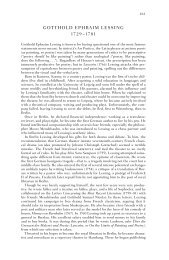
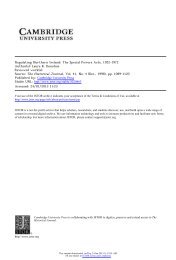


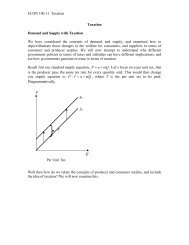
![The Rink - Cyril Dabydeen[1].pdf](https://img.yumpu.com/21946808/1/155x260/the-rink-cyril-dabydeen1pdf.jpg?quality=85)

